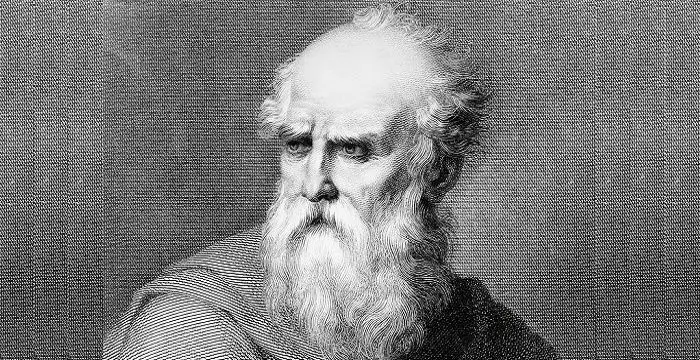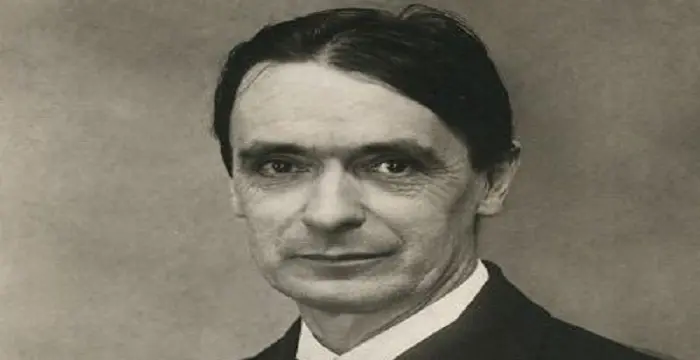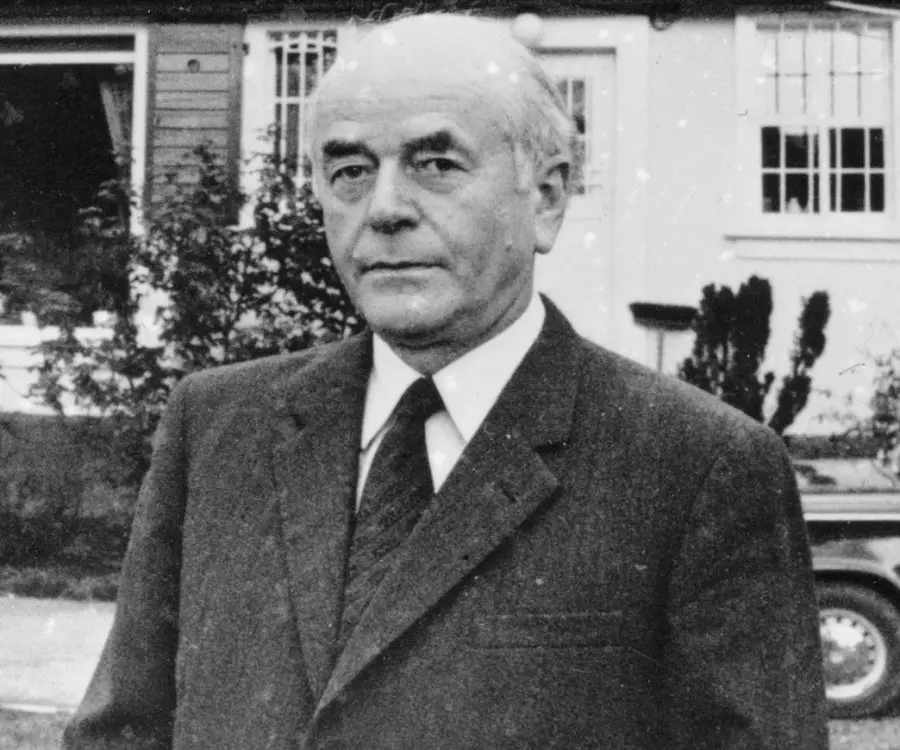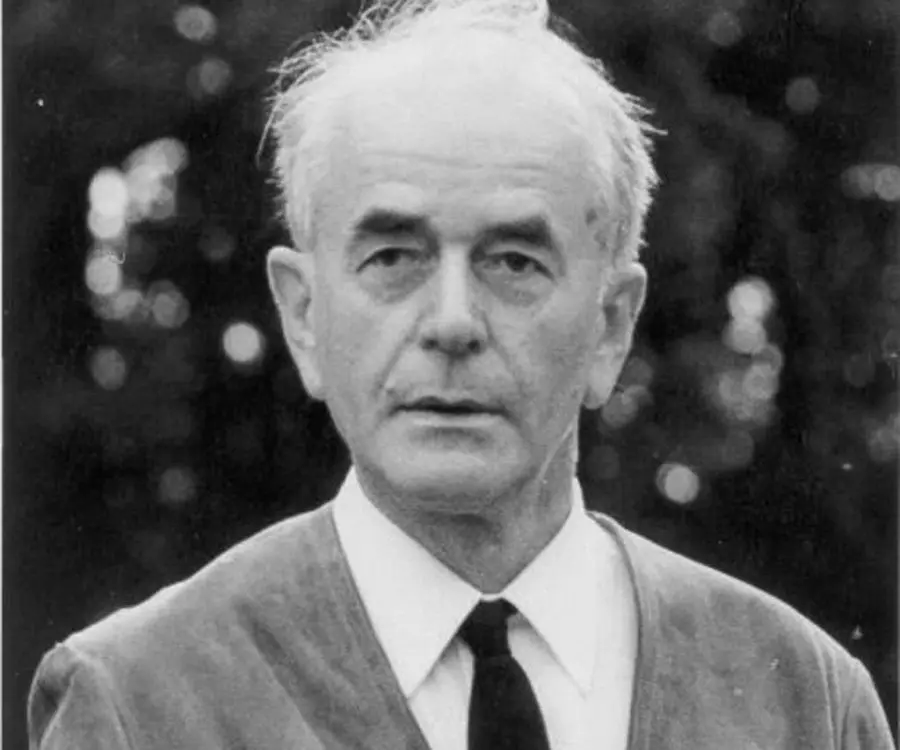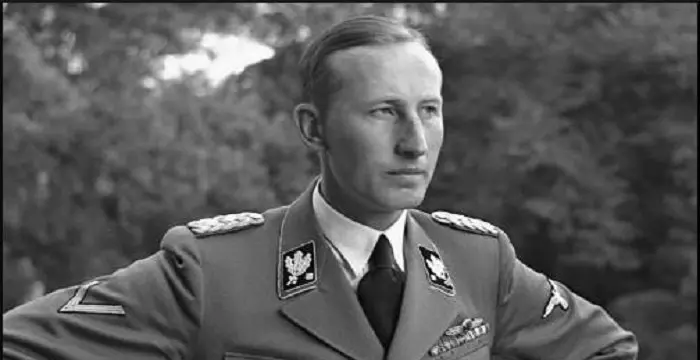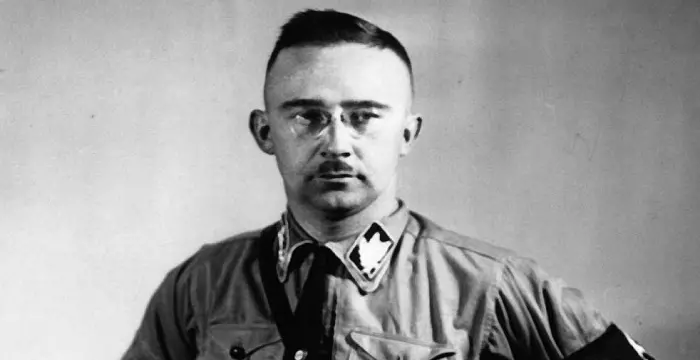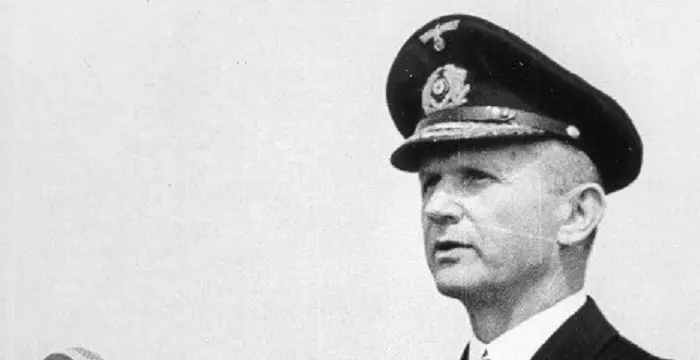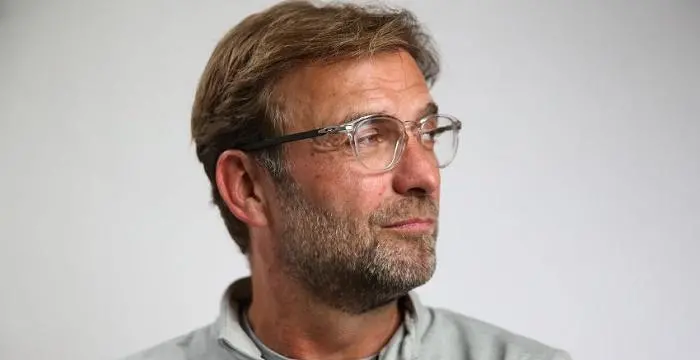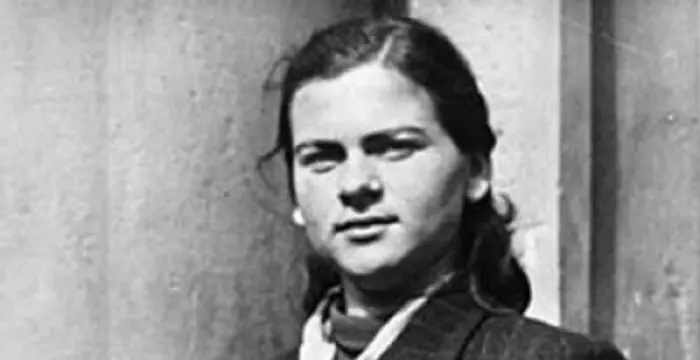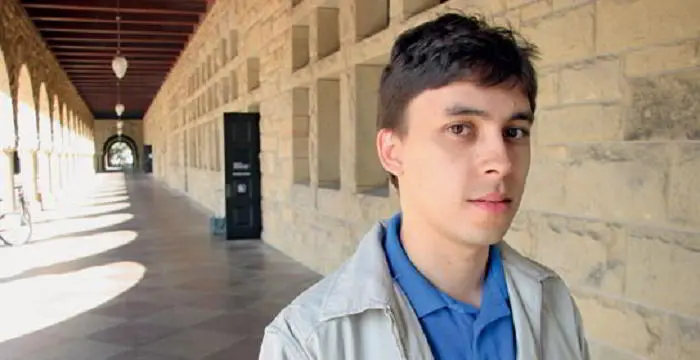
Albert Speer - Architects, Facts and Personal Life
Albert Speer's Personal Details
Albert Speer was a German architect and served as a Minister for Nazi Germany during the Second World War
| Information | Detail |
|---|---|
| Birthday | March 19, 1905 |
| Died on | September 1, 1981 |
| Nationality | German |
| Famous | Nazis, Architects |
| Ideologies | Nazis |
| Spouses | Margarete Weber (m. 1928–1981) |
| Known as | Berthold Konrad Hermann Albert Speer |
| Childrens | Albert Speer |
| Universities |
|
| Birth Place | Mannheim, Baden, Germany |
| Height | 182 |
| Gender | Male |
| Father | Albert Friedrich Speer |
| Mother | Luise Speer |
| Sun Sign | Pisces |
| Born in | Mannheim, Baden, Germany |
| Famous as | German Architect |
| Died at Age | 76 |
// Famous Architects
Vitruvius
Vitruvius was a Roman architect, author, and military engineer during the 1st century BC. Check out this biography to know about his childhood, family life, achievements and fun facts about his life.
Rudolf Steiner
Rudolf Steiner introduced groundbreaking ideas in realms of spirituality, art, education and agriculture. Check out this biography to know about his childhood, family life, achievements and other facts related to his life.
Zaha Hadid
The famous Iraqi-British architect Zaha Hadid is known for her designs of the ‘Rosenthal Center for Contemporary Art’ and ‘Heydar Aliyev Center’. To know more about her childhood, profile, career and timeline read on.
Albert Speer's photo
Who is Albert Speer?
Albert Speer was a German architect who is known in the history as ‘the man who built Nazi Germany’ and also ‘the Nazi who said sorry’ for accepting moral responsibility of the atrocities his Nazi party committed. In the World War II, Hitler appointed him as the Minister of Armaments and War Production for Germany. Before that, Speer worked as the chief architect in Hitler’s Nazi party and, based on the facts collected in his memoir, he was close to Hitler, on a personal and professional level. After an illustrious career in architecture, he gained Hitler’s attention and was offered to join the Nazi party in the 30s as Hitler wanted him to redesign entire Berlin. Speer thought of himself as an artist and there he was, planning wars for Hitler but even then, he performed his duties with patience and honesty. During the Nurnberg trials in 1945-46, Speer accepted the blames rising from his involvement in killing of Jews and also for employing the prisoners in factories. He was convicted and sent to prison for 20 years. Albert Speer died of a stroke in 1981 while on a visit to London.
// Famous Nazis
Reinhard Heydrich
Reinhard Heydrich was a high-ranking German Nazi official during the World War II. Check out this biography to know about his childhood, family life, achievements and other facts about his life.
Heinrich Himmler
Heinrich Himmler was a German Nazi military commander and a close associate of Adolf Hitler. This biography profiles his childhood, family, personal life, role in concentration camps and his death.
Karl Dönitz
Karl Dönitz was a German admiral and played an important role in World War II. This biography profiles his childhood, early life, family, naval career, capture, imprisonment, and other facts.
Childhood & Early Life
Born Berthold Konrad Hermann Albert Speer on 19th March 1905, Albert Speer hailed from Mannheim, Germany’s upper class Speer household. He was the second of three Speer boys and biographical accounts of him state that in their household, everything was formal and the family lacked warmth towards each other.
The family had a pretty good inflow of income and hence, he had a comfortable childhood. Speer was an athletic kid from the very beginning and loved rugby and mountain climbing.
He was also good with academics, particularly with mathematics and expressed his desire to become a mathematician, which wasn’t received quite well by his father, who was an architect, just like Albert’s grandfather. It seemed that his profession was already sealed even before he was born. His father said while mathematics was a noble profession, it wouldn’t provide him enough to survive and ‘only respect from the society won’t feed him or his family’.
After coming out of the school, Speer studied architecture at the University of Karlsruhe and later, at the Technical University of Munich, and Technical University of Berlin. He admired Heinrich Tessenow, who taught at Berlin University and once the undergraduate programme was over, Speer started working under him and learned a great deal about architecture.
Career
Albert Speer wasn’t a man who loved politics. If anything, he was an artist, who loved going ‘out of the box’ with his designs, but in 1930 when some of his students urged him to join the Nazi party saying that the party could benefit greatly from his skills, he nodded. In March 1931, he officially joined the Nazi party as an architect and was summoned to design the Nazi headquarters in Berlin by Joseph Goebbels. Speer did the job and returned to Mannheim as Hitler took the office in January 1933.
In 1933, the organizers of the Nuremberg Rally asked Speer to submit designs for the rally. As neither the organizers nor Rudolf Hess, Deputy Führer to Hitler, were able to approve Speer's designs, Hess sent him to Hitler to seek his approval. As a result of this work, Speer was made "Commissioner for the Artistic and Technical Presentation of Party Rallies and Demonstrations" of the Nazi Party.
After coming to power, he made plans to rebuild the chancellery. To execute the same, a contract was given to master architect Paul Troost and Speer was tasked to manage the building site for Troost. Hitler used to visit the site to get updates on the progress of renovations. This resulted into frequent interactions between Hitler and Speer and Hitler started meeting with him for breakfasts and lunches and a friendship bloomed between the two.
Speer admired Hitler and when Hitler proposed to him his dream of rebuilding entire Berlin, he asked Speer to join him in his vision.
Upon Troost’s death in January 1934, quite naturally, Albert Speer replaced him to become the Chief Architect which brought him into further close proximity with Hitler. Speer grew in stature as he beautifully and skilfully designed many Nazi events around the country. Speer designed parade grounds and monuments for Nazi public meetings, mostly in Nuremberg and most of his work was captured on film by Leni Riefenstahl’s film ‘Triumph of the Will’ and Speer rose to nationwide fame.
His keen artistic eyes provided the Nazi rallies a distinct aesthetic charm with the delicately designed marches, lighting effects and flag displays, and his popularity somehow crossed the German boundaries as the film ‘Triumph of the Will’ became sort of a rage in the European film circuit. In 1937, totally in awe of Speer, Hitler appointed him as the Inspector General of Reich and Speer went on to build Reich Chancellery in Berlin and once again, Hitler asked him to draw elaborate plans to rebuild the capital city and Speer started working on it, but it was a doomed project and Speer never quite finished it.
Awarded with the Nazi party’s Badge of Honour in 1938, and a year later when the German Jews were evicted from the Berlin, Speer was given the duty of allocation of apartments, and his workload grew tougher in 1941, for which he had to hire a few assistants. In February 1942, when he was appointed as the Minister of Armaments, he wanted to reject the offer but saying ‘NO’ to Hitler wasn’t something very wise, so Speer had to accept the position.
He later became the Minister of Armaments and War Production when the Second World War was at its very peak and took on the job of planning the German War Economy and strategized roads and defences for the Nazi army along with taking care of the military hardware. Under his reign, the arms production significantly increased, owing to the intelligent schemes of Speer to use the prisoners of war and slave labourers in the factories. Two millions prisoners of wars were employed in arms production for Germany and this greatly strengthened the position of Germany.
Once the war approached its end, and Hitler grew weak, Speer was directed to destroy Nazi industrial installations, an order he refused to obey. This caused bitterness in their relations, and later Speer accepted in his autobiography that he planned to assassinate Hitler, because he wasn’t anymore the person that Speer admired.
When the war was over, Speer was held guilty of war crimes against humanity in the famous Nuremberg trial in 1946. He accepted that he used the war and concentration camp prisoners in arms factories against their will. He was also the only person to accept the guilt of being part of the notorious Nazi party, that inhumanely massacred millions of Jews and Speer got sentenced to prison for twenty years.
When he got out of the jail, he penned his autobiography ‘Inside the Third Reich’, which came out in 1970, and he claimed that although he wanted to be as far from politics as he possibly could, he still worked with Nazis and felt deep regret for being a part of their actions. He also regretted doing nothing to stop the massacre of Jews during the holocaust, but by then it was too late. His health worsened in the late 70s, but by then he had penned one more book ‘Spandau: The Secret Diaries’. He died of stroke on 1st September 1981.
Personal Life
Albert Speer met Margarete Weber in mid 1922 and immediately fell in love with her. She was the daughter of a successful craftsman and businessman. However, Speer’s mother was not very excited to have Margarete as her daughter-in-law and abhorred their relationship, claiming that she belonged to the lower class of Germans. Despite his family’s disapproval, Speer married Margarete in 1928 and the couple gave birth to six children.
Albert was an artist by heart and people close to him and Hitler had stated that Hitler himself wanted to become an architect, but failed. This led to his natural admiration towards Speer. Some even went on the records to say that he was the only person in Nazi Germany who could stand up to Hitler and Hitler respected him for that immensely. That was one reason that they both were more friends than allies in a war.
// Famous Pisces Celebrities peoples
Christine Baumgartner
Christine Baumgartner is an American model and the wife of famous American actor Kevin Costner. Check out this biography to know about her birthday, childhood, family life, achievements and fun facts about her.
Galina Becker
Galina Becker is a former athlete and fitness model from America. Check out this biography to know about her birthday, childhood, family life, achievements and fun facts about her.
Nikkie De Jager
Check out all that you wanted to know about Nikkie De Jager, the famous Dutch Makeup artist; her birthday, her family and personal life, her boyfriends, fun trivia facts and more.
Albert Speer biography timelines
- // 19th Mar 1905Born Berthold Konrad Hermann Albert Speer on 19th March 1905, Albert Speer hailed from Mannheim, Germany’s upper class Speer household. He was the second of three Speer boys and biographical accounts of him state that in their household, everything was formal and the family lacked warmth towards each other.
- // 1922 To 1928Albert Speer met Margarete Weber in mid 1922 and immediately fell in love with her. She was the daughter of a successful craftsman and businessman. However, Speer’s mother was not very excited to have Margarete as her daughter-in-law and abhorred their relationship, claiming that she belonged to the lower class of Germans. Despite his family’s disapproval, Speer married Margarete in 1928 and the couple gave birth to six children.
- // 1933In 1933, the organizers of the Nuremberg Rally asked Speer to submit designs for the rally. As neither the organizers nor Rudolf Hess, Deputy Führer to Hitler, were able to approve Speer's designs, Hess sent him to Hitler to seek his approval. As a result of this work, Speer was made "Commissioner for the Artistic and Technical Presentation of Party Rallies and Demonstrations" of the Nazi Party.
- // Jan 1934Upon Troost’s death in January 1934, quite naturally, Albert Speer replaced him to become the Chief Architect which brought him into further close proximity with Hitler. Speer grew in stature as he beautifully and skilfully designed many Nazi events around the country. Speer designed parade grounds and monuments for Nazi public meetings, mostly in Nuremberg and most of his work was captured on film by Leni Riefenstahl’s film ‘Triumph of the Will’ and Speer rose to nationwide fame.
- // 1937His keen artistic eyes provided the Nazi rallies a distinct aesthetic charm with the delicately designed marches, lighting effects and flag displays, and his popularity somehow crossed the German boundaries as the film ‘Triumph of the Will’ became sort of a rage in the European film circuit. In 1937, totally in awe of Speer, Hitler appointed him as the Inspector General of Reich and Speer went on to build Reich Chancellery in Berlin and once again, Hitler asked him to draw elaborate plans to rebuild the capital city and Speer started working on it, but it was a doomed project and Speer never quite finished it.
- // 1946When the war was over, Speer was held guilty of war crimes against humanity in the famous Nuremberg trial in 1946. He accepted that he used the war and concentration camp prisoners in arms factories against their will. He was also the only person to accept the guilt of being part of the notorious Nazi party, that inhumanely massacred millions of Jews and Speer got sentenced to prison for twenty years.
- // 1970 To 1st Sep 1981When he got out of the jail, he penned his autobiography ‘Inside the Third Reich’, which came out in 1970, and he claimed that although he wanted to be as far from politics as he possibly could, he still worked with Nazis and felt deep regret for being a part of their actions. He also regretted doing nothing to stop the massacre of Jews during the holocaust, but by then it was too late. His health worsened in the late 70s, but by then he had penned one more book ‘Spandau: The Secret Diaries’. He died of stroke on 1st September 1981.
// Famous German peoples
Jordan Carver
Jordan Carver is a famous German model. Let’s take a close look at her personal life, including her age, career, net worth, achievements and some fun facts.
Jürgen Klopp
Jürgen Klopp is a German football manager, and a former professional football player. Check out this biography to know more about his childhood, family, personal life, etc.
Irma Grese
Irma Grese was a notorious German Nazi concentration camp guard during the Second World War. This biography profiles her childhood, life, horrifying acts, death and other facts.
Juliane Koepcke
Juliane Koepcke is a German-Peruvian biologist, who was the lone survivor among the 92 passengers and crew of the ill-fated LANSA Flight 508 that crashed in the Peruvian rainforest on 24 December 1971. Know more about her life in this biography.
Jawed Karim
Jawed Karim is a German-American internet entrepreneur, technologist and co-founder of the video-sharing website, YouTube. Check out this biography to know about his childhood, family, personal life, achievements, age, etc.
Charles Bukowski
Charles Bukowski was a German-born American novelist, short story writer and poet. With this biography, learn in details about his childhood, life, works, career and timeline
Albert Speer's FAQ
What is Albert Speer birthday?
Albert Speer was born at 1905-03-19
When was Albert Speer died?
Albert Speer was died at 1981-09-01
Where was Albert Speer died?
Albert Speer was died in London
Which age was Albert Speer died?
Albert Speer was died at age 76
Where is Albert Speer's birth place?
Albert Speer was born in Mannheim, Baden, Germany
What is Albert Speer nationalities?
Albert Speer's nationalities is German
What is Albert Speer ideologies?
Albert Speer's ideologies is Nazis
Who is Albert Speer spouses?
Albert Speer's spouses is Margarete Weber (m. 1928–1981)
Who is Albert Speer childrens?
Albert Speer's childrens is Albert Speer
What was Albert Speer universities?
Albert Speer studied at Technical University of Berlin, Technical University of Munich, Karlsruhe Institute of Technology
How tall is Albert Speer?
Albert Speer's height is 182
Who is Albert Speer's father?
Albert Speer's father is Albert Friedrich Speer
Who is Albert Speer's mother?
Albert Speer's mother is Luise Speer
What is Albert Speer's sun sign?
Albert Speer is Pisces
How famous is Albert Speer?
Albert Speer is famouse as German Architect
